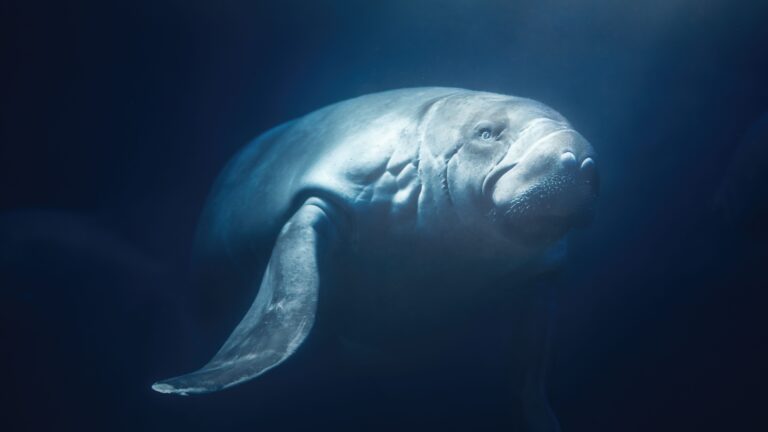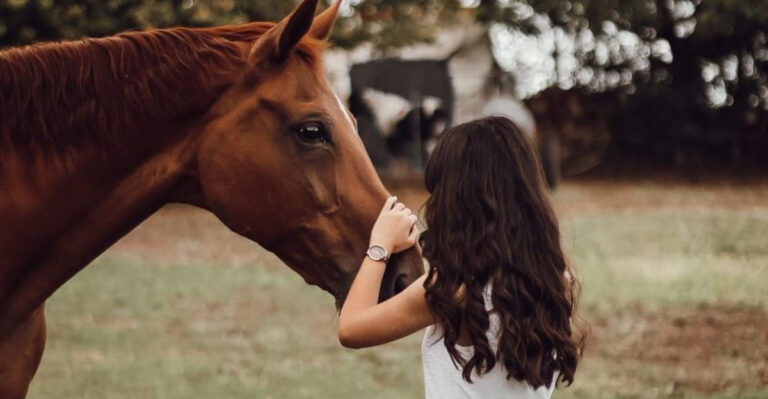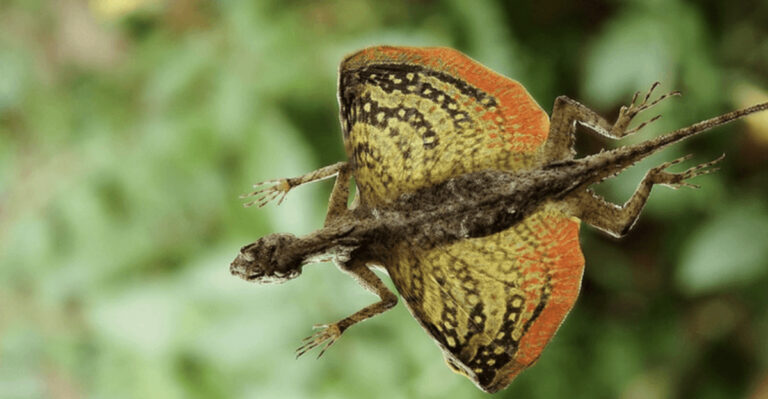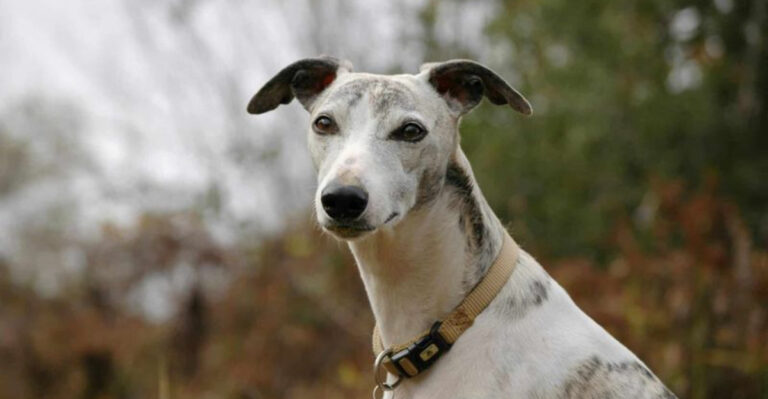Exploring The Unique Traits Of The Clouded Leopard
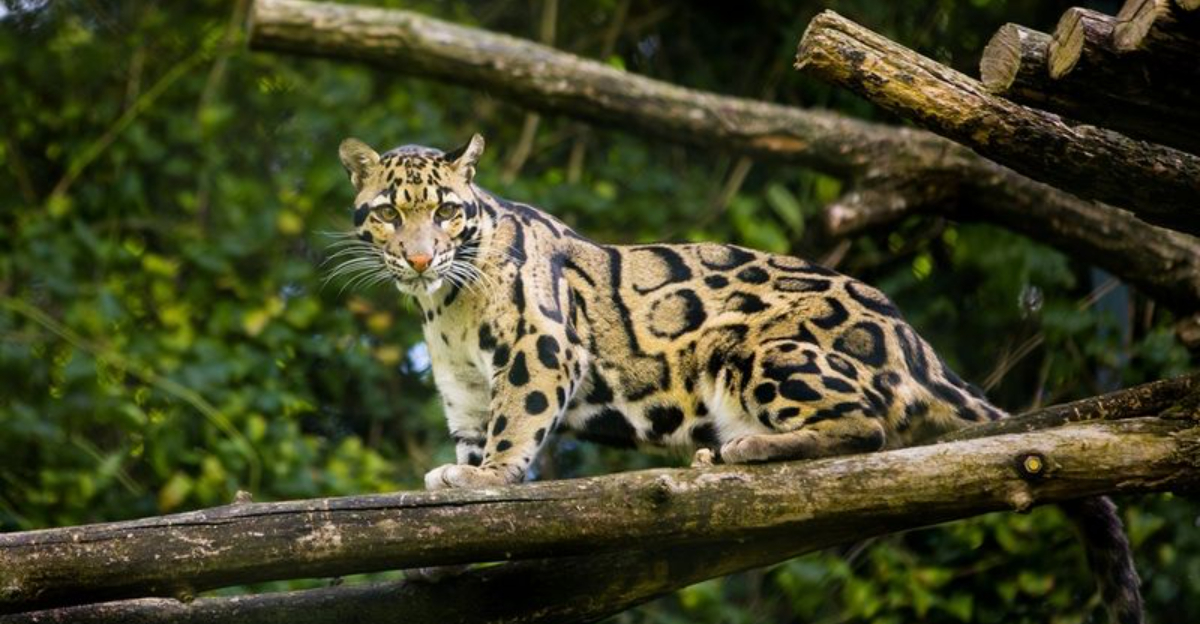
Ever spotted a ghost in the misty forests of Southeast Asia? You might have glimpsed the elusive clouded leopard, nature’s acrobatic masterpiece.
With their distinctive cloud-like markings and remarkable adaptations, these mysterious felines occupy a special place between big and small cats.
Let’s uncover what makes these forest ninjas truly extraordinary.
1. Nature’s Climbing Champions

Imagine a cat that can hang upside-down from branches using just its back paws! Clouded leopards pull off this gravity-defying stunt thanks to their flexible ankle joints that rotate 180 degrees.
Their short, powerful limbs and long tails provide perfect balance for tree-top adventures. These felines can even descend tree trunks headfirst – a rare talent in the cat world.
2. Record-Breaking Canines

Got impressive canines? Not like these cats! Clouded leopards boast the longest fangs relative to skull size of any wild cat – proportionally larger than those of tigers or lions.
These two-inch dental daggers could easily pierce through tough hides and bones. Such oversized teeth in a medium-sized cat body earned them the nickname “modern-day saber-tooth” among amazed researchers.
3. Cloud-Patterned Camouflage
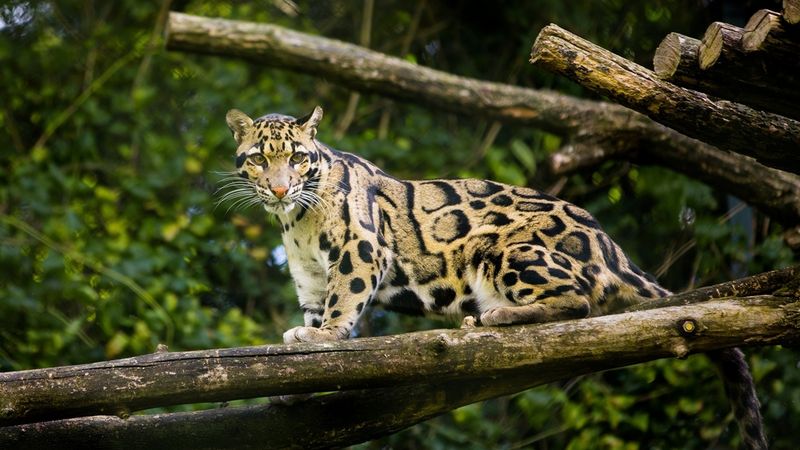
Those stunning dark-edged blotches resembling storm clouds aren’t just for show. This distinctive pattern provides perfect camouflage among dappled forest shadows and tree branches.
Each leopard’s pattern is as unique as a human fingerprint. Their silvery-gray to yellowish-brown coat changes slightly depending on habitat, allowing these stealthy hunters to virtually disappear against their surroundings.
4. Tail Longer Than Body
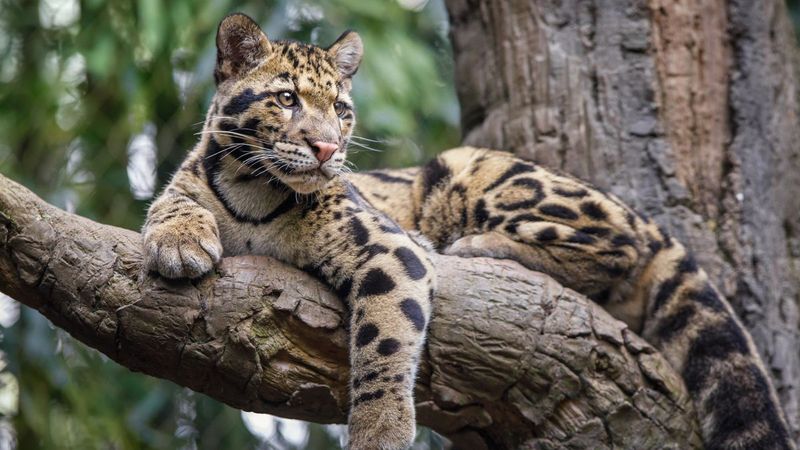
Talk about impressive proportions! A clouded leopard’s tail often exceeds its body length, measuring up to 3 feet long – nearly as tall as a kindergartner!
This extraordinary appendage serves as a crucial balancing tool during treetop acrobatics. Like a tightrope walker’s pole, their thick, bushy tail helps them navigate narrow branches and stabilize during those impressive upside-down maneuvers.
5. Mystery Classification
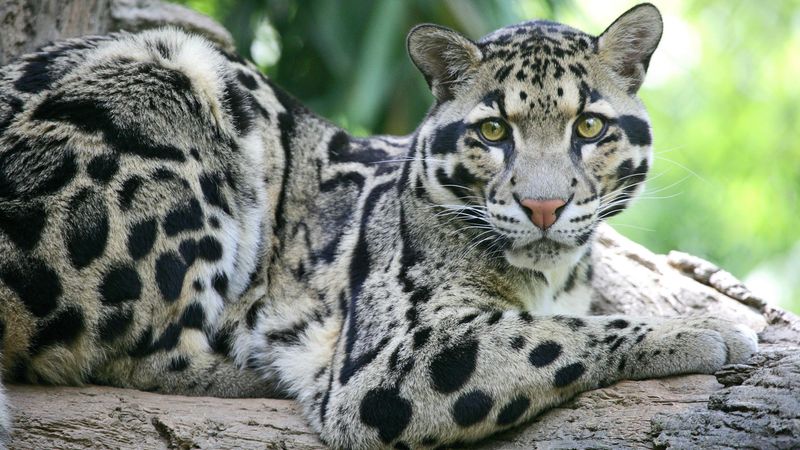
Identity crisis? Clouded leopards sit in evolutionary limbo between big cats (like lions and tigers) and small cats (like housecats). Scientists created a separate genus just for them: Neofelis.
Their unique throat bones allow them to purr like small cats yet roar somewhat like big cats. This biological middle-ground makes them fascinating subjects for researchers studying feline evolution.
6. Ankle-Rotating Acrobats

Fancy seeing a cat that moves like a squirrel? Clouded leopards can rotate their ankles nearly 180 degrees backward, allowing them to scamper down trees headfirst!
This remarkable joint flexibility isn’t found in other big cats. Combined with their powerful forelimbs and sharp claws, this adaptation makes them the most accomplished climbers in the entire cat family.
7. Secretive Night Stalkers
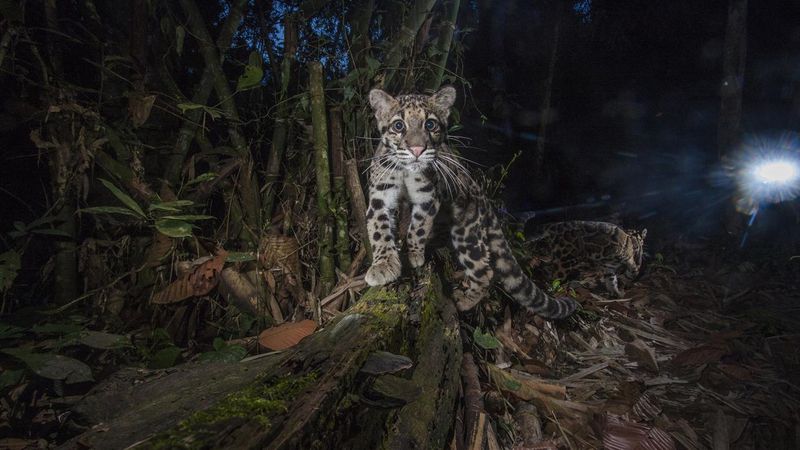
Silent as shadows, these cats transform into ghost-like hunters after sunset. Their large eyes gather available moonlight, giving them vision six times better than humans in low light.
Most people living in clouded leopard territory have never spotted one in the wild. These elusive creatures avoid human contact so effectively that researchers must rely on camera traps to study their natural behaviors.
8. Island Dwarfism Effect
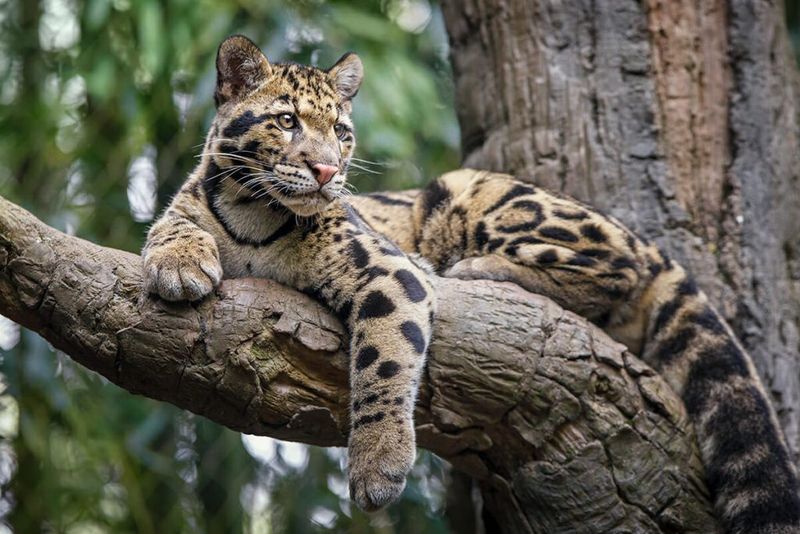
Size matters in evolution! The Borneo clouded leopard is significantly smaller than its mainland cousins, showcasing a fascinating biological phenomenon called island dwarfism.
Limited resources on islands often cause species to evolve smaller bodies over generations. DNA studies confirm these island-dwelling cats diverged from mainland populations about 1.4 million years ago, evolving into distinct subspecies.
9. Remarkable Jaw Mechanics

Wide open! Clouded leopards can gape their jaws at an impressive 100-degree angle – nearly twice what a domestic cat manages. This extraordinary ability pairs perfectly with those record-breaking canines.
Such jaw mechanics allow them to deliver powerful, precise kills on prey larger than themselves. Their specialized teeth and jaw structure evolved specifically for penetrating deep into prey’s vital areas, making them efficient forest predators.
10. Unexpectedly Varied Diet
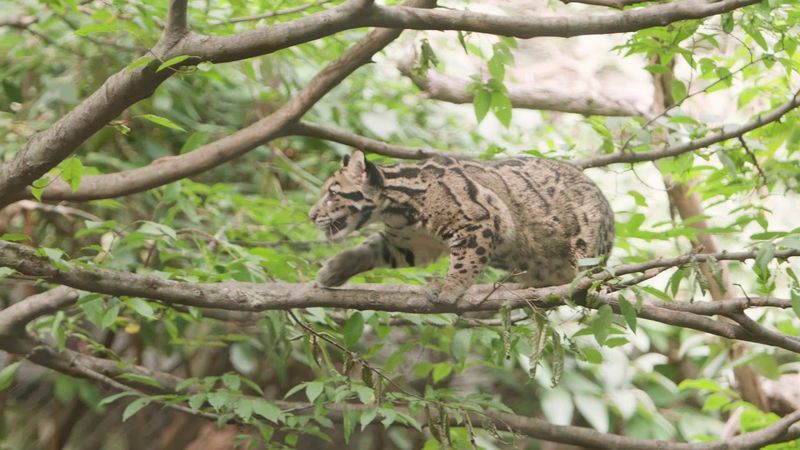
Picky eaters? Not these cats! Unlike many specialized predators, clouded leopards adapt their menu to whatever’s available – from monkeys and deer to birds, porcupines, and even fruit!
Their diverse diet helps them survive in changing environments. Researchers have found evidence of them hunting in trees and on the ground, making them both arboreal and terrestrial hunters – a rare versatility among wild cats.
11. Endangered Forest Ghosts
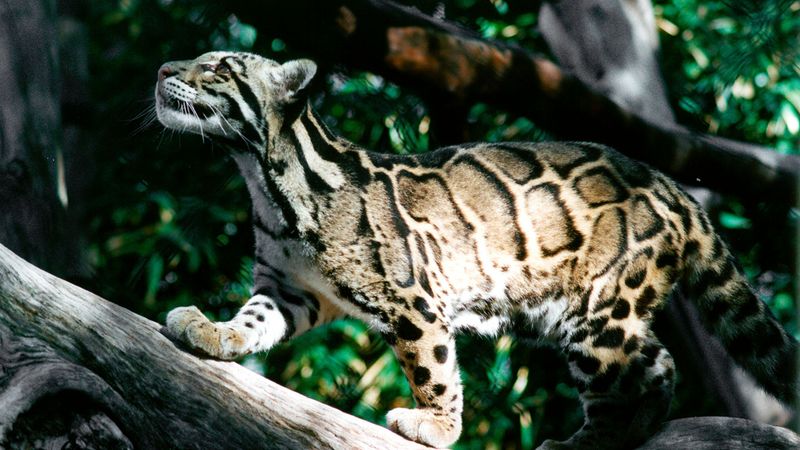
Racing against time, these forest phantoms face a grim reality – their population has plummeted by over 30% in just three generations. Deforestation strips away their treetop kingdom daily.
Poaching for their beautiful pelts and bones (used in traditional medicine) further threatens their survival. With fewer than 10,000 adults remaining in fragmented habitats, conservation efforts are desperately trying to protect these remarkable evolutionary marvels.
12. Vocal Communication Arsenal
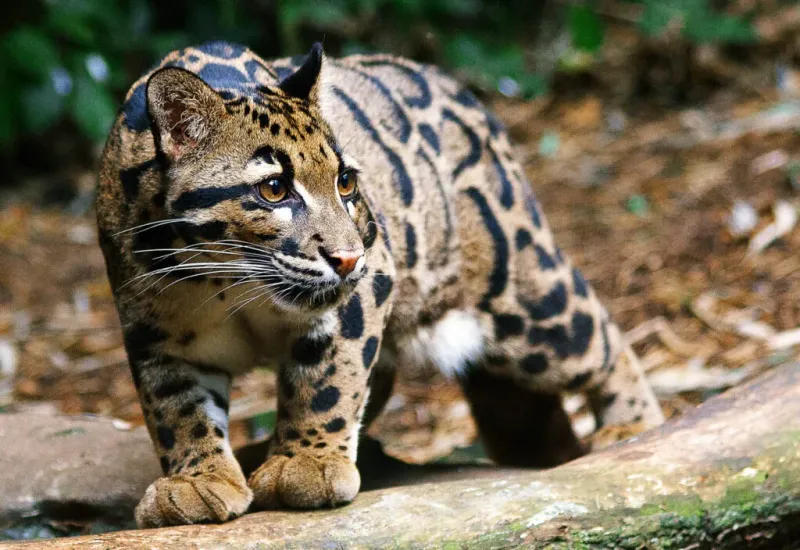
Silent hunters with a surprising vocabulary! Clouded leopards produce unique vocalizations not heard in other cats – including bird-like chirps, hisses, and low-pitched snorts.
Their most distinctive sound is a prolonged, high-pitched wail that carries through dense forests. Unlike typical big cats, they can’t roar properly due to their hybrid vocal anatomy, instead producing these fascinating intermediate sounds.

